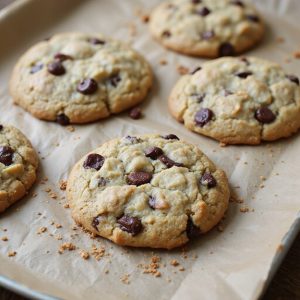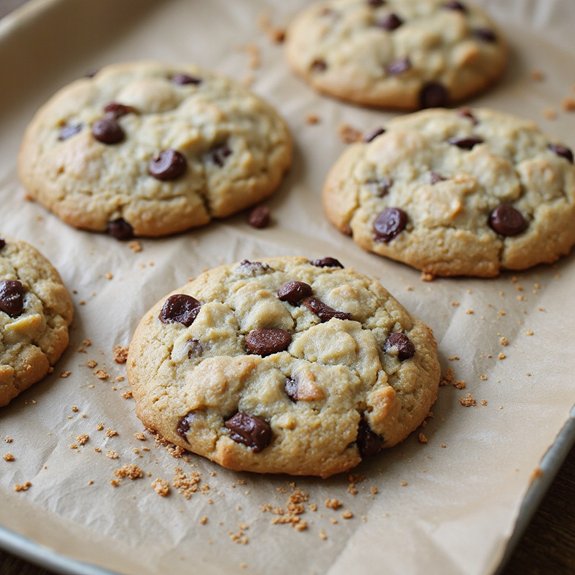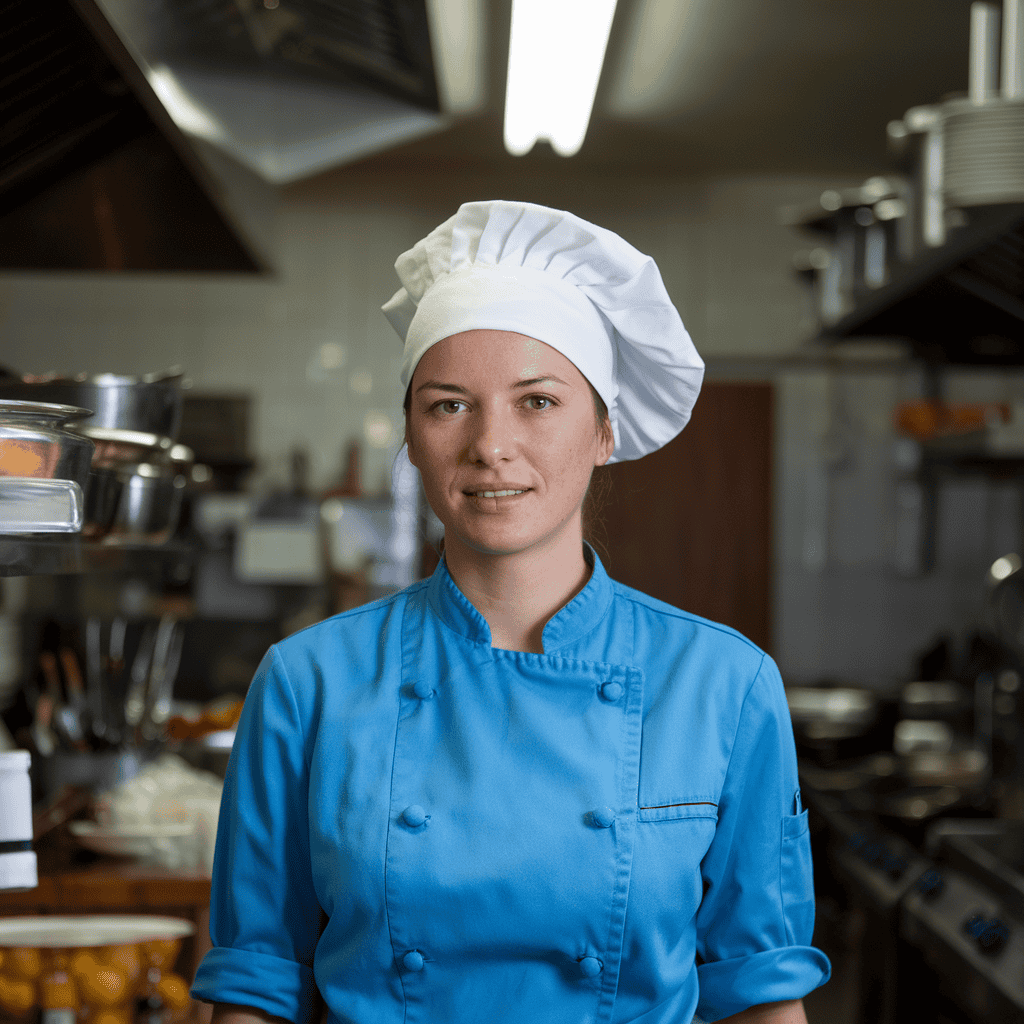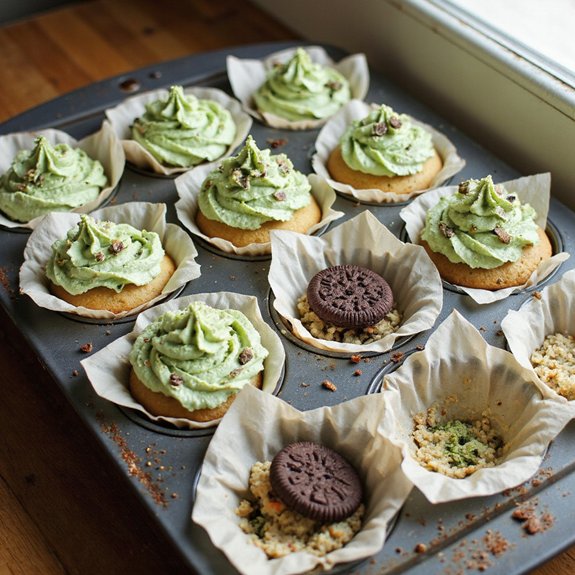Imagine breaking open a still-warm cookie: bronze-edged and crinkled, its tender, sandy crumb giving way to ribbons of melting dark chocolate, a whisper of toasted oats perfuming the air with nutty warmth.
Picture a trayful cooling on the rack—the soft tap of sugar-crisp tops, the buttery aroma filling the kitchen like a hug on a brisk Scottish morning.
These cookies matter to me because they marry shortbread’s delicate snap with the chew and comfort of a classic chocolate chip—homey, reliable, deeply rewarding.
On a weeknight when dinner ran late and spirits were lower than the thermostat, a quick batch of these transformed the table—simple ingredients, one bowl for dry and one for wet, and calm restored.
They’re perfect for busy weeknights, after-school treats, or Sunday suppers when everyone lingers a little longer.
If you love balance—tender center, crisp edges, and real chocolate—this one’s for you. Ready? Let’s cook!
Why You’ll Love It
- Delivers bold flavor from dark chocolate and toasted oat notes
- Achieves tender, shortbread-like crumb with cornstarch and fine oats
- Balances chewy centers with lightly crisp, golden edges
- Uses simple pantry staples; no specialty ingredients required
- Freezes beautifully; bake from frozen with minimal extra time
Ingredients
- 170 g unsalted butter softened — room temp for easy creaming
- 150 g light brown sugar packed — for caramel notes
- 75 g granulated sugar — balances sweetness and spread
- 1 large egg room temperature — binds and adds chew
- 1 tsp vanilla extract — real vanilla for best flavor
- 250 g all-purpose flour — standard protein content
- 25 g cornstarch — shortbread-like tenderness
- 1/2 tsp fine sea salt — enhances flavor
- 1/2 tsp baking soda — gentle lift
- 200 g dark chocolate chips or chunks — 60–70% cacao melts well
- 50 g milk chocolate chips optional — adds creamy sweetness
- 50 g rolled oats finely ground — Scottish-style for sandy crumb
- 30 g demerara sugar for rolling optional — crunchy, sparkly tops
Step-by-Step Method
Prep the Pans
Line two baking sheets with parchment paper. Set them aside. Gather all equipment so it’s within reach. Preheat the oven to 350°F (175°C). Place a wire rack out for cooling later. Having everything ready guarantees the process and prevents overmixing once you start combining wet and dry ingredients.
Whisk the Dry Mix
Whisk together the all-purpose flour, cornstarch, baking soda, fine sea salt, and finely ground rolled oats. Break up any lumps for an even blend. The cornstarch and oats add tenderness and a shortbread-like crumb. Keep this bowl nearby so you can add it quickly to the butter mixture without delay.
Cream the Butter and Sugars
Beat softened unsalted butter with light brown sugar and granulated sugar until light and creamy, about two minutes. Use a stand mixer or hand mixer on medium speed. Scrape the bowl as needed. Proper creaming aerates the dough, improving lift and creating that delicate, tender texture in the finished cookies.
Add Egg and Vanilla
Beat in the egg and vanilla extract until fully combined and glossy. Mix just until incorporated and smooth. Avoid overbeating at this stage to maintain structure. Scrape down the bowl again to ensure no streaks remain. A cohesive mixture helps the dry ingredients blend evenly in the next step.
Combine Wet and Dry
Add the dry ingredients to the butter mixture. Mix on low just until a soft dough forms. Stop as soon as no dry pockets remain. Overmixing toughens cookies and reduces the sandy, shortbread-like crumb. Use a rubber spatula to finish folding, ensuring the bottom of the bowl is fully incorporated.
Fold in the Chocolate
Gently fold in dark chocolate chips or chunks, and milk chocolate chips if using. Distribute them evenly without overworking the dough. Reserve a few pieces to press on top of the dough balls before baking for a bakery-style look. Chopped chocolate creates melty pockets for more dramatic pools.
Chill the Dough
Cover the bowl and chill for 30 minutes. This firms the dough and controls spread, yielding thicker cookies with better texture. If you prefer even less spread, chill up to 60 minutes. Longer chills can make scooping harder, so let the dough sit briefly at room temperature before shaping if needed.
Portion and Roll
Scoop 2-tablespoon portions of dough. Roll into balls with your palms. Optionally roll the tops in demerara sugar for sparkle and crunch. Press a few reserved chocolate pieces on top. Arrange dough balls on prepared sheets, spaced two inches apart to allow for gentle spreading during baking.
Flatten Gently
Press each dough ball to about 3/4 inch thick. Use your fingertips or the bottom of a measuring cup. Gentle flattening promotes even baking and uniform thickness. Don’t overflatten or the cookies will spread too much. Keep edges smooth to prevent uneven browning in the oven.
Bake to Perfection
Bake at 350°F (175°C) for 10–12 minutes. Look for set, lightly golden edges and slightly underbaked centers. Pull earlier for chewier centers, or extend 1–2 minutes for crisper edges. Rotate pans halfway if your oven bakes unevenly. Avoid overbaking; carryover heat will finish the centers.
Set and Cool
Let cookies cool on the sheet for five minutes. This sets the structure and prevents breakage. Transfer to a wire rack to cool completely. The texture finalizes as steam escapes. If reusing sheets, cool them briefly to prevent excess spread in subsequent batches. Repeat with remaining dough.
Serve and Store
Serve slightly warm for gooey pools of chocolate, or at room temperature for tidy bites. Store airtight at room temperature for up to four days. For make-ahead convenience, freeze dough balls up to two months. Bake from frozen, adding one to two minutes, keeping an eye on the edges for doneness.
Ingredient Swaps
- Butter: use salted butter (reduce added salt to a pinch), cultured butter for tang, or plant-based block butter for dairy-free.
- Sugars: swap light brown with dark brown for deeper caramel; use all granulated plus 1 tsp molasses; coconut sugar works but yields drier, darker cookies.
- Egg: replace with 1 flax egg (1 tbsp ground flax + 3 tbsp water, 5 min) or 3 tbsp aquafaba for vegan.
- Flour: use UK plain flour; for gluten-free, a 1:1 GF baking blend plus 1/4 tsp xanthan if not included.
- Cornstarch: substitute potato starch or tapioca starch; in the UK use cornflour (same as US cornstarch).
- Oats: use porridge oats pulsed fine; skip if unavailable and add 25 g more flour for similar structure.
- Chocolate: any mix of chips/chunks; sub with chopped bar chocolate, or budget chocolate buttons; add nuts or dried fruit for part of the chips.
- Vanilla: use vanilla paste or 1/2 tsp almond extract for a twist.
- Demerara sugar roll: swap with turbinado or skip entirely.
You Must Know
Doneness • If edges are pale and centers look wet at 10 minutes, leave in just until rims turn light golden and centers jiggle slightly (about 11–12 minutes); carryover sets them in 5 minutes on the sheet, yielding tender centers.
Troubleshoot • If cookies spread too much into thin disks, chill dough 60 minutes instead of 30 and make certain butter is cool to the touch (~65–67°F/18–19°C); warmer fat liquefies fast, causing excessive spread.
Flavor Boost • For a nuttier, shortbread-like depth, toast the finely ground oats in a dry pan until fragrant and just golden (4–6 minutes), then cool completely; gentle browning develops malted notes.
Swap • For chewier texture without altering sweetness, replace 25 g of all-purpose flour with additional finely ground oats, and use 60–70% cacao chunks; the extra beta-glucans bind moisture, keeping centers plush.
Scale • For a bakery-style size, portion 60 g dough balls (roughly 1/4 cup), flatten to about 1 inch thick, and extend time to 13–15 minutes; larger mass needs +2–3 minutes to set edges while keeping gooey middles.
Serving Tips
- Serve warm with strong black tea or a wee dram of Scotch.
- Plate with clotted cream and raspberry jam for a Scottish twist.
- Crumble over vanilla ice cream; drizzle with warm chocolate sauce.
- Pair with oat milk latte to echo the oat notes.
- Gift in tins, lined with parchment and demerara-sprinkled tops showing.
Storage & Make-Ahead
Keep cookies airtight at room temperature up to 4 days.
In the fridge, they last 1 week but may firm—warm briefly to refresh.
Make ahead by chilling dough 30–60 minutes, then scoop.
Freeze dough balls up to 2 months.
Bake from frozen, adding 1–2 minutes.
Baked cookies freeze 2 months.
Reheating
Reheat gently.
Microwave 1 cookie 8–12 seconds wrapped in a paper towel.
Oven 300°F (150°C) 4–6 minutes on a tray.
Stovetop skillet low heat, covered, 2–3 minutes per side.
Hogmanay Biscuit Tins
By the flicker of New Year’s eve candles, I tuck these Scottish chocolate chip cookies into a Hogmanay biscuit tin like treasured keepsakes.
I line the tin with parchment, nestle the rounds in neat layers, and let the chocolate’s whispery bloom promise midnight sweetness.
The tin seals in their sandy crumb and keeps the edges crisp, the centers soft—ready for first-footers and late-toasts alike.
- Choose a snug, lidded tin; slip parchment between layers to prevent smudged chips and sticking.
- Add a few sugar cubes or a food-safe desiccant to keep the cookies dry and the snap lively.
- Label the lid with bake date and variety; rotate the tin every day to distribute aromas evenly.
Stored cool and dark, they keep beautifully for Hogmanay week.
Final Thoughts
Ready to bake a batch? Give these Scottish-inspired cookies a try as written, or tweak them with different chocolate mixes or extra oats to make them your own!
Frequently Asked Questions
Can I Make Them Gluten-Free Without Oats?
Yes—you can. I swap in a 1:1 gluten-free flour blend and omit oats; add 1 extra tablespoon cornstarch. Chill well, don’t overmix, and bake until edges blush gold. Expect tender centers, faintly sandy, perfectly cozy.
How Do Altitude Changes Affect Baking Time?
Altitude makes cookies bake faster and spread more; I shorten time slightly, raise oven 15–25°F, add a tablespoon flour, and reduce sugar a touch. Watch edges turn gold like sunset, then pull early for tender centers.
Are There Dairy-Free Butter Alternatives That Work?
Yes—use vegan stick “butter” with 80%+ fat; I favor Miyoko’s or Earth Balance. I’ll suggest refined coconut oil works, too. Add a splash of oat milk for softness, and chill the dough—flaky edges, tender centers.
Can I Halve the Recipe Successfully?
Yes—you can halve it easily. I’d weigh ingredients, beat just until creamy, use one egg beaten and add half by weight, chill 30 minutes, and bake one sheet. Your kitchen will smell like warm, buttery dusk.
What Mixer Speed Prevents Overcreaming Butter?
Use medium speed—about speed 4 on a stand mixer—for 1–2 minutes. I watch for pale, fluffy butter with tiny ridges, not glossy or greasy. If it starts looking airy like whipped cream, I stop immediately.

Scottish Chocolate Chip Cookies
Equipment
- 2 Baking sheet
- 1 stand mixer or hand mixer
- 3 Mixing bowl
- 1 Whisk
- 1 Rubber spatula
- 1 Wooden spoon
- 1 digital scale optional
- 1 measuring cup set
- 1 measuring spoon set
- 1 wire cooling rack
- 2 parchment paper sheet
Ingredients
- 170 gram unsalted butter softened
- 150 gram light brown sugar packed
- 75 gram granulated sugar
- 1 large egg room temperature
- 1 teaspoon vanilla extract
- 250 gram all-purpose flour
- 25 gram cornstarch
- 1/2 teaspoon baking soda
- 1/2 teaspoon fine sea salt
- 200 gram dark chocolate chips or chunks
- 50 gram milk chocolate chips optional
- 50 gram rolled oats finely ground (Scottish-style)
- 30 gram demerara sugar for rolling, optional
Instructions
- Line two baking sheets with parchment paper and set aside.
- In a bowl whisk together flour, cornstarch, baking soda, salt, and the finely ground oats.
- In a large bowl beat the softened butter with brown sugar and granulated sugar until light and creamy, about 2 minutes.
- Beat in the egg and vanilla until fully combined and glossy.
- Add the dry ingredients to the butter mixture and mix on low just until a soft dough forms.
- Fold in the dark and milk chocolate chips until evenly distributed.
- Cover and chill the dough for 30 minutes to firm up for thicker cookies.
- Scoop 2-tablespoon mounds of dough, roll into balls, and optionally roll the tops in demerara sugar.
- Arrange dough balls on prepared sheets spaced 2 inches apart and gently flatten to about 3/4 inch thick.
- Bake at 350°F (175°C) for 10–12 minutes until edges are set and lightly golden while centers look slightly underbaked.
- Cool on the sheet for 5 minutes to set, then transfer to a wire rack to cool completely.
- Serve slightly warm or at room temperature.





